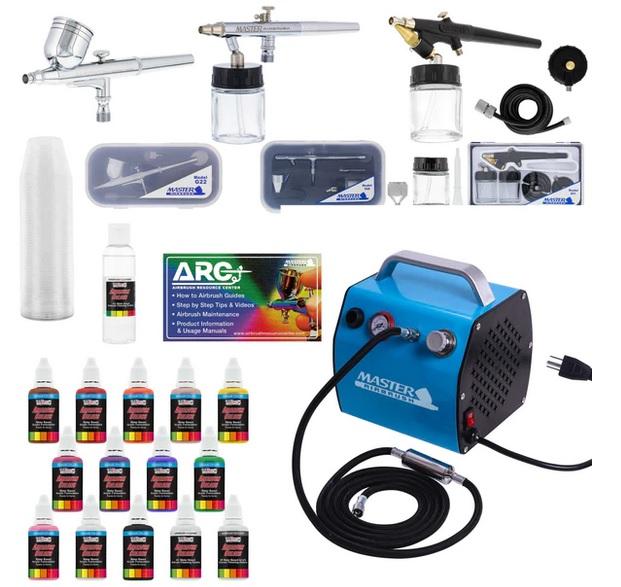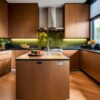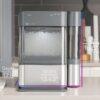
Airbrush Buyer Guide for Model Kits
Hey there, fellow model kit enthusiasts! If you’re on the hunt for the perfect airbrush to elevate your modeling game, you’ve come to the right place. Welcome to ebuyerguide.com’s ultimate “Airbrush Buyer Guide for Model Kits,” where I, Scotty Govoni, will take you on a journey through the world of airbrushes. Whether you’re a beginner eager to explore this art form or a seasoned pro looking to upgrade your tools, this comprehensive guide will equip you with all the knowledge you need to make an informed decision. So, buckle up and get ready to unleash your creativity with the help of the perfect airbrush. Let’s dive in!
- Understand the Benefits of Airbrushing – Learn about the advantages of using an airbrush for model kits. Airbrushing provides a smooth and even application of paint, allowing for precise detailing and seamless blending of colors. It offers greater control and versatility compared to traditional brush painting methods.
- Research Different Types of Airbrushes – Explore the various types of airbrushes available for model kits. There are three main types: single-action, dual-action, and gravity-feed. Each type has its own features and benefits, so understanding their differences will help you make an informed decision.
- Consider Air Source Options – Decide on the type of air source you prefer for your airbrush. The two main options are airbrush compressors and canned air. Compressors provide a continuous air supply and allow for greater control over air pressure, while canned air offers portability and convenience.
- Assess Needle and Nozzle Sizes – Consider the needle and nozzle sizes that are suitable for your model kit projects. Smaller needle and nozzle sizes are ideal for fine detailing, while larger sizes are better for broader coverage. Choose sizes that match the level of detail and scale of your models.
- Evaluate Airbrush Features and Controls – Look for airbrushes with adjustable features and controls. Features like paint flow control, air pressure adjustment, and trigger mechanism options (such as dual-action) offer more flexibility and precision in your airbrushing technique.
- Consider Cleaning and Maintenance – Take into account the ease of cleaning and maintenance of the airbrush. Look for models that are easy to disassemble and clean, as proper maintenance is crucial for optimal performance and longevity.
- Read Reviews and Seek Recommendations – Read reviews from experienced modelers and seek recommendations from fellow hobbyists or online communities. Their insights can provide valuable information about specific airbrush models, brands, and their performance in real-world applications.
- Set a Budget – Determine your budget for purchasing an airbrush. Prices can vary depending on the brand, quality, and features of the airbrush. Consider your skill level, frequency of use, and long-term commitment to the hobby when setting your budget.
- Purchase from Reputable Sellers – Ensure that you purchase your airbrush from reputable sellers or specialized hobby stores. This will help you obtain genuine products and receive reliable customer support.
- Practice and Experiment – Once you have chosen and acquired your airbrush, spend time practicing and experimenting with different techniques. Familiarize yourself with the controls, learn how to mix and thin paints properly, and explore various airbrushing methods to enhance your skills and achieve the desired effects on your model kits.
By following this Airbrush Buyer Guide for Model Kits, you can confidently select the right airbrush for your model kits and embark on a rewarding journey of airbrushing, adding a professional touch to your creations. Happy airbrushing!
What is the best airbrush for painting models?
The best airbrush for painting models depends on individual preferences and specific needs. Popular options include the Iwata Eclipse HP-CS, Badger Patriot 105, and Harder & Steenbeck Evolution. Consider factors like budget, desired features, and intended use to find the perfect fit.
What type of paint do airbrushes use for plastic models?
Airbrushes can use a variety of paints for plastic models. Acrylic paints are commonly used due to their ease of use, quick drying time, and easy cleanup. Brands like Vallejo, Tamiya, and Mr. Hobby offer excellent acrylic paints specifically formulated for airbrushing plastic models.
What is the best airbrush paint for model cars?
The best airbrush paint for model cars also depends on personal preference. Acrylic paints from brands like Tamiya, Mr. Color, and Vallejo are popular choices. Enamel paints from brands like Testors and Humbrol are also commonly used. Experiment with different brands and types to find the one that suits your needs and achieves the desired finish.
How do you use an airbrush for model kits?
To use an airbrush for model kits, start by preparing your workspace, ensuring proper ventilation. Thin your chosen paint with an appropriate thinner to achieve the desired consistency. Adjust the air pressure on your compressor and practice your spraying technique on a scrap surface. Hold the airbrush at a consistent distance and apply thin, even coats, building up the layers gradually. Clean your airbrush thoroughly after each use.
Do you need a spray booth for airbrushing models?
While not mandatory, using a spray booth for airbrushing models is highly recommended. A spray booth helps capture and filter out over-spray, preventing it from spreading in your workspace. It improves air quality, protects your health, and minimizes the mess. It’s an investment that contributes to a cleaner and safer airbrushing environment.
Do you need to prime models before airbrushing?
Priming models before airbrushing is generally recommended. Primers create a smooth, consistent surface for the paint to adhere to, ensuring better adhesion, color accuracy, and durability of the final paint job. It also helps to reveal any imperfections on the model, allowing for easier corrections. Choose a primer suitable for your model’s material, such as plastic or resin, and apply it evenly before proceeding with airbrushing.







